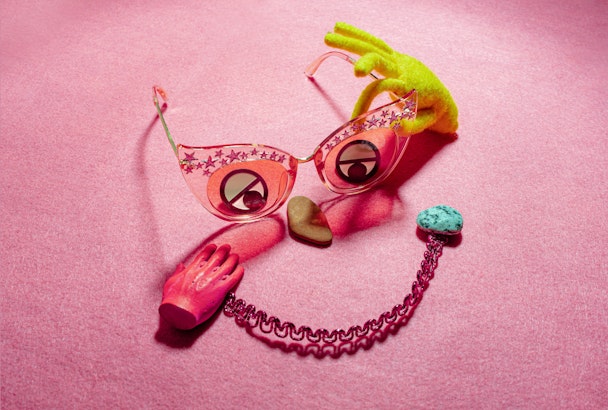No, Malcolm Gladwell, creatives aren’t ‘delusional’; we’re just unconventional
In a recent interview, author Malcolm Gladwell described innovators as ‘by definition delusional’, sparking a debate about creativity. Here, Charli Edwards argues that creativity and pragmatism go hand in hand.

Are creatives delusional - or is there more practicality to it than they're given credit for? / Girl with red hat via Unsplash
Are creative types really deluded or are they just taking unconventional approaches to their work? The latest episode of Steven Bartlett’s blockbuster podcast Diary of a CEO featuring Malcolm Gladwell has raised some interesting questions about how we view creatives and their paths to success.
Creatives don't need to be delusional to succeed; after all, innovation often arises from different ways of looking at a problem and its solution. By dismantling some common misconceptions around creativity and exploring what it truly takes to succeed in today's competitive business landscape, I hope that we can gain an appreciation for how unique solutions often drive positive results.
Advertisement
What is a creative?
In short, the ‘delusional’ headlines following Malcolm Gladwell’s latest appearance on Diary of a CEO is clickbait.
Gladwell delves into a topic that has been hotly debated, defining who ‘creatives’ are, and what makes them different from other types of people.
The word ‘creatives’ is often thrown around in the world of art and design, but what does it really mean? While everyone has the potential to be creative, those who are labeled as ‘creatives’ possess a unique set of characteristics that make them stand out from the crowd.
These individuals are inclined towards imagination, innovation, and originality. They use these traits to bring their ideas to life in a meaningful and impactful way. Whether through the written word, a visual medium, or artistic expression, creatives can encapsulate emotions and ideas in a way that resonates with others and leaves a lasting impression. Combining this talent with an insatiable drive to create sets creatives apart from others.
Advertisement
It’s not just Gladwell; there’s a common misconception that creatives are delusional, as if their unique way of seeing the world is somehow a form of illness. This couldn't be further from the truth. Creatives have a different perspective on life, allowing them to bring fresh ideas and new waves of creativity to the table. They tend to think outside of the box and approach challenges in unique and imaginative ways that most people wouldn't consider.
It's their ability to see the beauty and inspiration in things others might overlook that makes creatives so essential to our world. So, the next time you're quick to judge a creative as delusional, perhaps take a moment to appreciate that they are simply seeing the world in a different and inspiring way.
Suggested newsletters for you
What creatives are not
Creatives bring a unique perspective to the table, one that is often unconventional but always invaluable. They see the world differently and are not afraid to push boundaries. Creatives can help generate new ideas, create compelling marketing campaigns, and design captivating products that resonate with consumers. Simply put, they are instrumental in driving innovation and helping organizations stand out from the crowd.
Is creativity merely a whimsical flight of fancy? Far from it. Creativity is a powerful intersection where art meets science, a unique fusion of imagination and logic. Consider, for instance, the field of architectural design. Doesn’t it beautifully embody this synergy? The aesthetically pleasing structures we admire are artistic visions and scientific marvels, meticulously planned and constructed with precise mathematical equations and physics principles.
Or ponder the world of animation. Isn’t it a delightful blend of artistic storytelling and advanced computer technology? Pixar, a name synonymous with pioneering animation, ingeniously combines artistic creativity with scientific innovation, bringing to life enchanting stories that touch hearts across the globe.
So, is creativity just a delusion? Absolutely not. It's a testament to human ingenuity, where artistry and scientific rigor dance harmoniously, pushing the boundaries of what's possible. Isn't that a thrilling prospect?
Embracing creativity within the workplace environment can lead to many positive outcomes – but that doesn’t mean that you should suddenly have 16 crazed creatives running around, frightening the life out of everyone. When employees feel empowered to share their unique ideas, creative problem-solving moments arise that can lead to new product development and processes that boost the bottom line.
While allowing room for creativity may feel risky initially, it cultivates an innovative environment where employees feel valued and supported. This increased collaboration and team communication can enhance productivity and lead to a stronger company culture. With the tools and resources to think outside the box, companies can rethink their strategies and stay ahead of the competition. Allowing creativity in the workplace creates a ripple effect that can lead to profound and positive transformations.
In a world where creative fields are still fighting for legitimacy within corporate environments, we don’t need unhelpful musings like this latest gem, sending the industry backwards when it’s needed more than ever.
Content by The Drum Network member:

Cavendish Consulting
Creativity that counts.
Creativity is your secret weapon. It can educate, challenge and motivate. It can turn ordinary into extraordinary, and your audiences...

